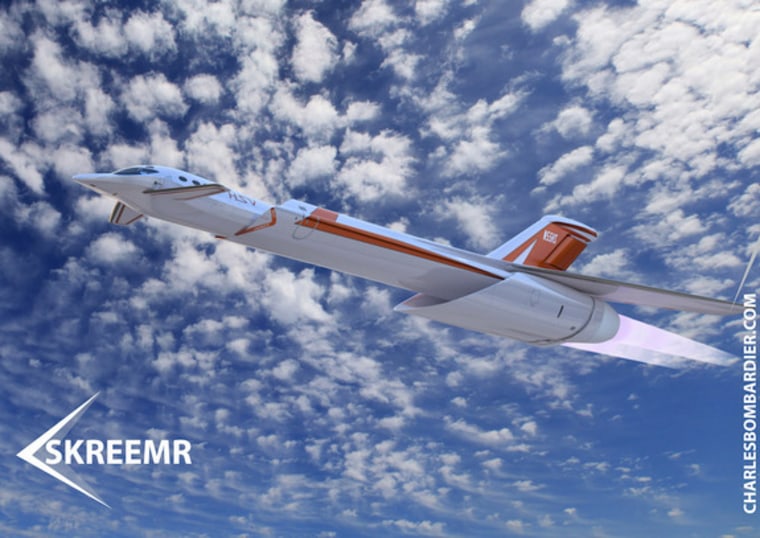How'd you like to travel from New York to London in less than an hour? One imaginative inventor has developed a concept plane that could take passengers across the pond in just 30 minutes — at least in theory.
The aircraft concept, dubbed the Skreemr, is the brainchild of Charles Bombardier, an engineer and inventor who writes about his futuristic prototype designs in the Canadian newspaper The Globe and Mail. Bombardier's latest design describes a passenger aircraft that can travel at 10 times the speed of sound, or just under 8,000 miles per hour.
If such a jet were ever built, it would be five times faster than the Concorde, a now-retired supersonic passenger jet that once soared through the sky at speeds reaching Mach 2.04 (more than twice the speed of sound, at 1,565 miles per hour).
To reach its incredible Mach 10 speed, the Skreemr jet would have to take off from a "magnetic rail-gun launching system," Bombardier explained in a recent column for The Globe and Mail. Rail guns consist of two conductive rails that produce an electromagnetic field that can propel a vehicle forward at high speed.
After climbing and reaching Mach 4, the plane's scramjet engine would ignite, burning up hydrogen and compressed oxygen to propel the plane forward at speeds surpassing Mach 10.

The futuristic concept plane could carry about 75 passengers at a time, but these hypersonic travelers won't be taking off in the Skreemr anytime soon. While scramjet engines are currently under development in the United Statesand China, real-life applications of these devices are still a long way away.
And as Bombardier pointed out in his recent post, scramjets are likely to be used on unmanned aircraft, like military drones, long before anyone straps them to a commercial aircraft.
This is a condensed version of an article that appeared on Live Science. Read the original story here. Follow Elizabeth Palermo @techEpalermo. Follow Live Science @livescience, Facebook & Google+.
MORE FROM LIVE SCIENCE
- Image Gallery: Breaking the Sound Barrier
- Photos: Spike Aerospace's Luxurious Supersonic Jet
- In Photos: F-35 Fighter Jet Makes 1st Vertical Night Landing
Copyright 2015 LiveScience, a Purch company. All rights reserved. This material may not be published, broadcast, rewritten or redistributed.